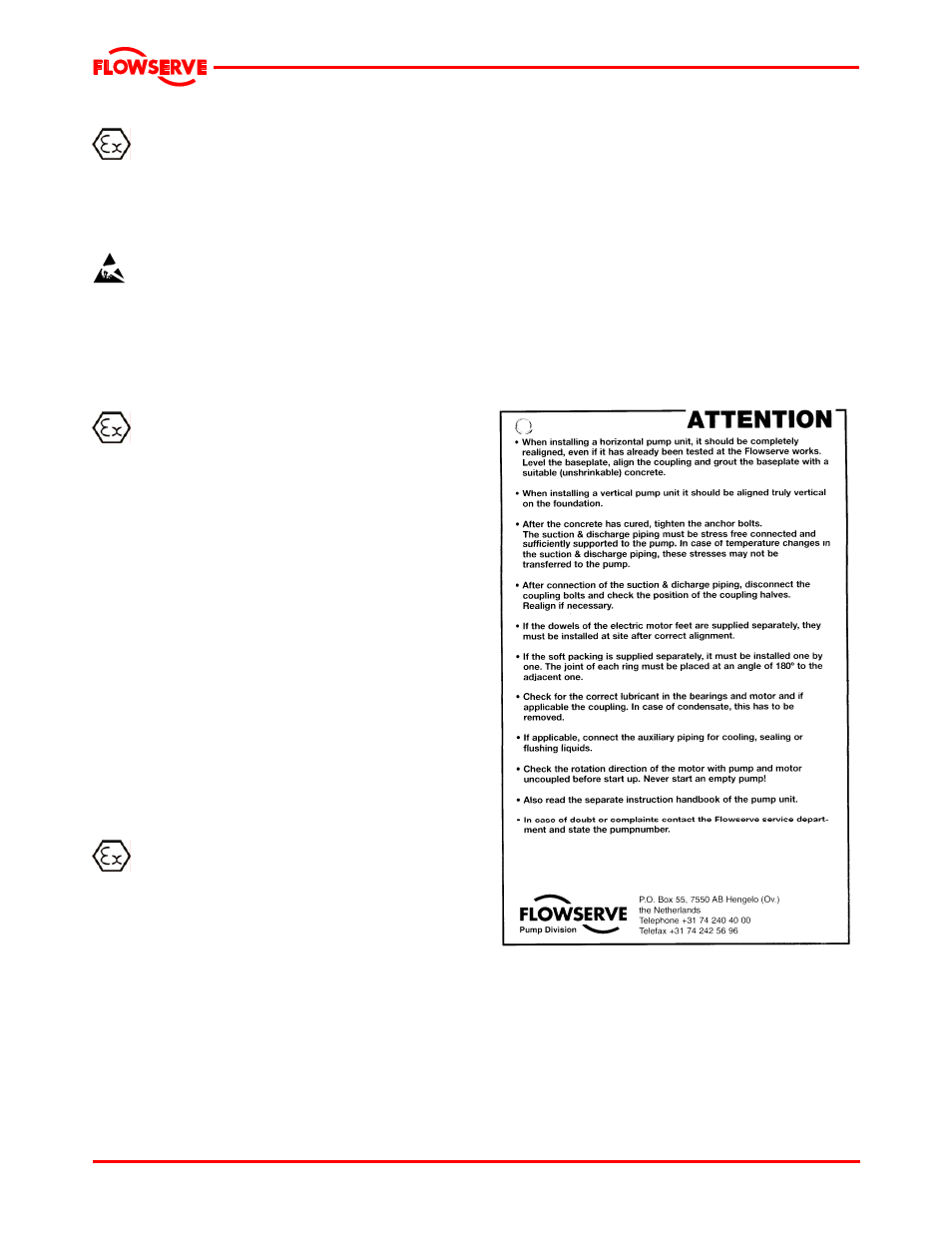4 preventing sparks, 5 preventing leakage, 6 maintenance to avoid the hazard – Flowserve LNGT User Manual
Page 8: 7 nameplate and warning labels, 1 nameplate, 2 warning labels

LNGT USER INSTRUCTIONS ENGLISH 00083107 02-08
Page 8 of 48
®
1.6.4.4 Preventing sparks
To prevent a potential hazard from mechanical
contact, the coupling guard must be non-sparking.
To avoid the potential hazard from random induced
current generating a spark, the earth contact on the
baseplate must be used.
Avoid electrostatic charge: do not rub non-
metallic surfaces with a dry cloth
;
ensure cloth is
damp.
The coupling must be selected to comply with 94/9/EC
and correct alignment must be maintained.
1.6.4.5 Preventing leakage
The pump must only be used to handle liquids
for which it has been approved to have the correct
corrosion resistance.
Avoid entrapment of liquid in the pump and associated
piping due to closing of suction and discharge valves,
which could cause dangerous excessive pressures to
occur if there is heat input to the liquid. This can occur if
the pump is stationary or running.
Bursting of liquid containing parts due to freezing
must be avoided by draining or protecting the pump
and ancillary systems.
Where there is the potential hazard of a loss of a seal
barrier fluid or external flush, the fluid must be
monitored.
If leakage of liquid to atmosphere can result in a
hazard, the installation of a liquid detection device is
recommended.
1.6.4.6 Maintenance to avoid the hazard
CORRECT MAINTENANCE IS REQUIRED TO
AVOID POTENTIAL HAZARDS WHICH GIVE A
RISK OF EXPLOSION
The responsibility for compliance with maintenance
instructions is with the plant operator.
To avoid potential explosion hazards during
maintenance, the tools, cleaning and painting
materials used must not give rise to sparking or
adversely affect the ambient conditions. Where there
is a risk from such tools or materials, maintenance
must be conducted in a safe area.
It is recommended that a maintenance plan and
schedule is adopted. [See section 6, Maintenance.]
1.7 Nameplate and warning labels
1.7.1 Nameplate
Every pump has a name plate made in stainless steel
with information regarding operating condition as
capacity, total dynamic head, rotational speed,
specific gravity and serial number. For details of
nameplate, see the Declaration of Conformity.
1.7.2 Warning labels
The pump has been shipped with 1 or more warning
labels. Follow the instructions on these labels
carefully.
